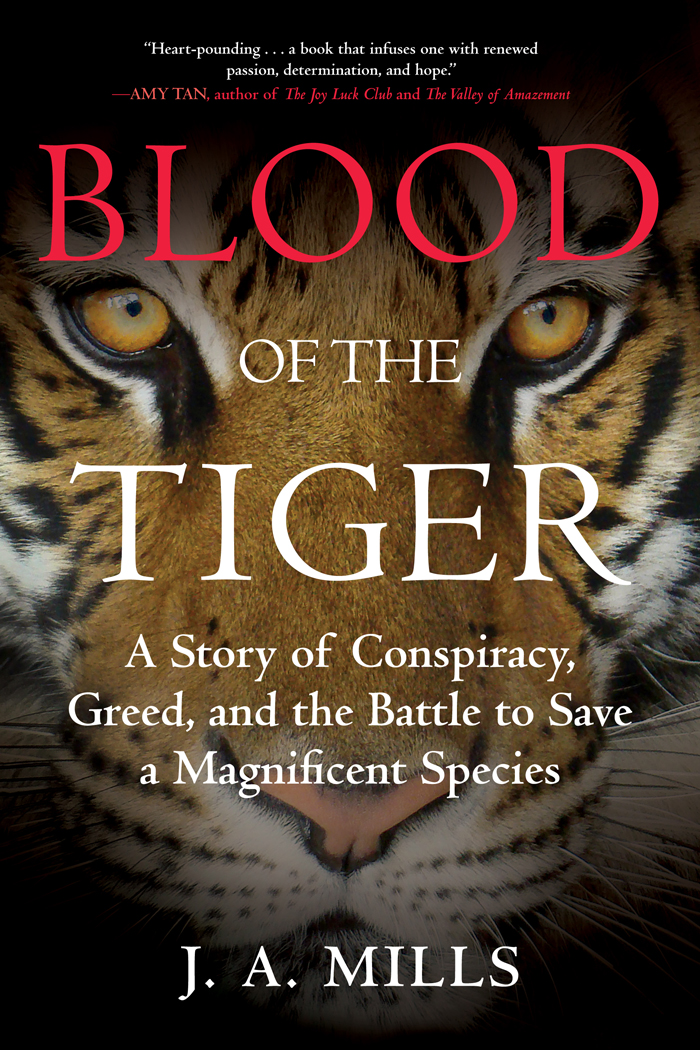
Blood of the Tiger
A Story of Conspiracy, Greed, and the Battle to Save a Magnificent Species
کتاب های مرتبط
- اطلاعات
- نقد و بررسی
- دیدگاه کاربران
نقد و بررسی

October 20, 2014
In this call to action, Mills recounts the complicated history and current state of efforts to save wild tigers, stop legal tiger farming and illegal trade, and end consumer demand for tiger products (such as tiger-bone wine, in which tiger bones and sometimes entire skeletons steep in vats of wine and sell for hundreds of dollars). For 20 years Mills worked for various conservation groups in the fight for tigers, and the story she tells is a twisted one, from political maneuvering by powerful countries to the “backstabbing jostle” in the conservation community itself. From the onset, Mills states the stakes plainly: “The King of the Jungle cannot outrun death much longer.” And she does not shy from blame, either, stating outright that when the last wild tiger dies, “Its blood will stain China’s hands forever. Other hands too.” Though the first half of the book becomes tedious in its play-by-play documentation of infighting among conservation groups, by the latter half readers becomes emotionally invested in Mills’s message—that is, the endless manipulation, misdirection, and “charade” of the players involved—and the final section entitled “How You Can Help End Tiger Trade” is a welcome one.

November 1, 2014
Conservation consultant Mills examines the failure of conservationists to stop the commodification and farming of endangered tigers.In certain parts of the world, tigers and other exotic species are valued for their uses in traditional medicine, food, luxury clothing and taxidermy products. In recent years, there has been an explosion in the farming of these animals. The author fell in love with tigers after her first sight of one in the wild. However, despite her passionate descriptions and some cute nicknames for certain key players, this is not a romantic adventure story. It is a memoir of her two decades investigating the illegal trade in endangered animal products and her efforts to end it, dealing with farmers, politicians, medical professionals, sanctuary owners and warring conservationists. Mills argues that creating legal markets for farmed tigers and other exotic species only increases the illegal trade in higher-status wild animals and that if we want to prevent extinction in the wild, we must eradicate consumer demand for these products. She describes successes in convincing the traditional Chinese medicine community to back conservation and in using celebrity advertising directed at consumers. She also shows the daunting political and economic obstacles and the failures of conservationists, including herself, that led to the current situation: There are now more tigers on farms than in the wild in China, and there are thousands of privately held, untracked tigers in other nations, including the United States. As is often the case with stories of underfunded activists fighting against industrial and political interests, this is a frustrating and tragic story, but Mills offers neither false hope nor despair. The author provides a list of resources for readers inspired to take action, in addition to a substantial set of notes. A telling inside view of 20 years in international tiger conservation work, including the successes, failures and the work that is still required.
COPYRIGHT(2014) Kirkus Reviews, ALL RIGHTS RESERVED.

October 1, 2014
For 20 years, Mills worked with major global conservation groups, including the World Wildlife Fund, the Convention on International Trade in Endangered Species of Wild Fauna and Flora (CITES), and TRAFFIC (a group that monitors wildlife trade). Relating her personal journey, she tells of learning that what we understand to be true is not what other people and cultures understand, even when they appear to agree with us. Interorganizational as well as intracountry politics are major players in the text, and with these, Mills interweaves her travels, explorations, and meetings with key people who have the desire to save the wild tiger. It is not enough to keep the creatures in captivity, the author explains, and we definitely should not treat them and other beasts (e.g. rhinos and sun bears) as farmed animals. VERDICT Mills's work will be of interest to readers of environmental memoirs and those who want to understand the politics behind the decisions. The title is not as beautiful as Steve Winter's photo-filled Tigers Forever, but the message is similar: We need to protect this predator and its environment, not just for the tiger but for us.--Jean E. Crampon, Univ. of Southern California, Los Angeles, Lib.
Copyright 2014 Library Journal, LLC Used with permission.

November 15, 2014
The world is aware (or by now should be) of the plight of tigers, bears, rhinos, and elephants, all in the cross-hairs of international poaching rings trafficking in animal parts for luxury goods and traditional medicines. But there is also a more quiet, insidious threat to these species, particularly tigers and bears: the rise of the new concept of farming these animals. Animals are stolen from the wild or taken from their owners and then bred in captivity, kept in small cages, and raised for their parts. Mills, who has written for wildlife magazines and worked for the World Wildlife Fund and Conservation International, stumbled upon this story when she saw a captive sun bear in a small cage in Bangkok. She follows a trail of bears captured to eat, bears held and milked of their bile, and tigers raised for their bones and beautiful striped skins. Along the way, she becomes enmeshed in the international politics of saving endangered species, as well as the internecine conflict that can occur between rival conservation organizations, and tells an absorbing insider story of trying to save truly wild tigers, a battle that is not yet won.(Reprinted with permission of Booklist, copyright 2014, American Library Association.)

























دیدگاه کاربران